“You’re killing an innocent man.” Those were the last words spoken by Daniel Lewis Lee on July 14, 2020, before he was executed to death in the Terre Haute, Indiana prison. He was pronounced dead at 8:07 a.m.
The execution was the first US federal execution since 2003. The decision to execute Lee was twice appealed to the US Supreme Court; the last appeal heard at 2 a.m. on July 14, 2020. In a 5 to 4 ruling, the Court ruled that the execution could move forward. The victim’s family opposed it.
Lee was strapped to a gurney for four hours in the death chamber while the wheels of justice turned.
Chevie Kehoe
The story of Daniel Lewis Lee (Lee) begins with a person named Chevie Brian Kehoe (Chevie).
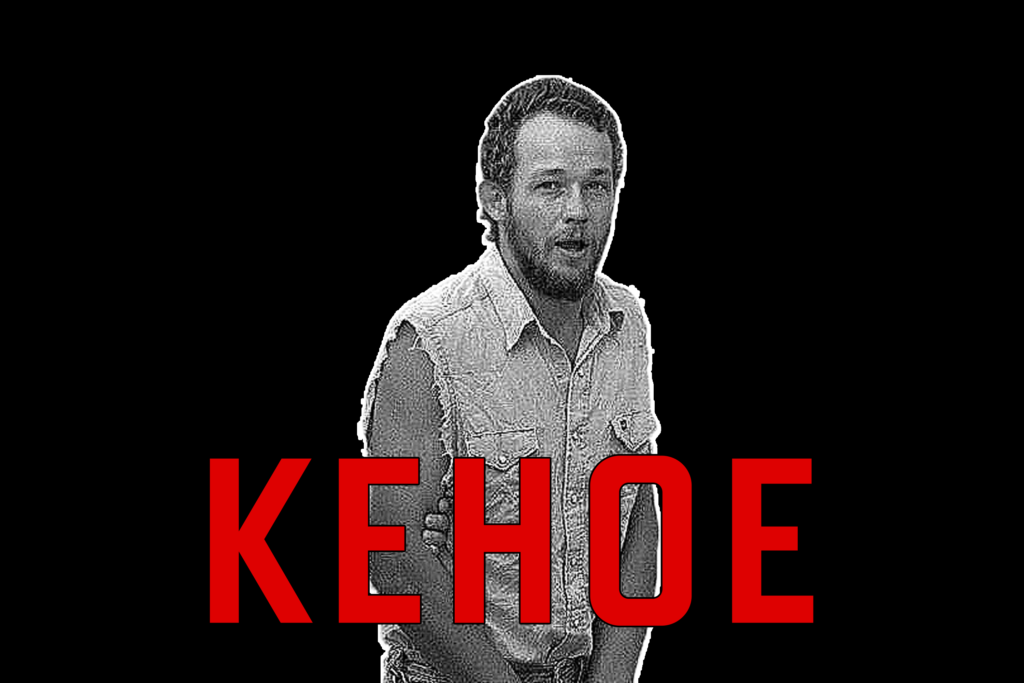
Chevie was the oldest of eight boys of Kirby Keith and Gloria Kehoe. One reporter did a deep dive into the case of Chevie and Lee, and interviewed acquaintances of the Kehoe family and some of Chevie’s teachers and employers for a radio documentary.
The reporter learned that, by all accounts, Chevie was a polite, personable, hard working and competent young person. He was an honor student in the gifted program at junior high. He wanted to be a pilot. That is, until Gloria Kehoe removed him from school at 14. His parents believed schools were a threat.
Kehoe parents
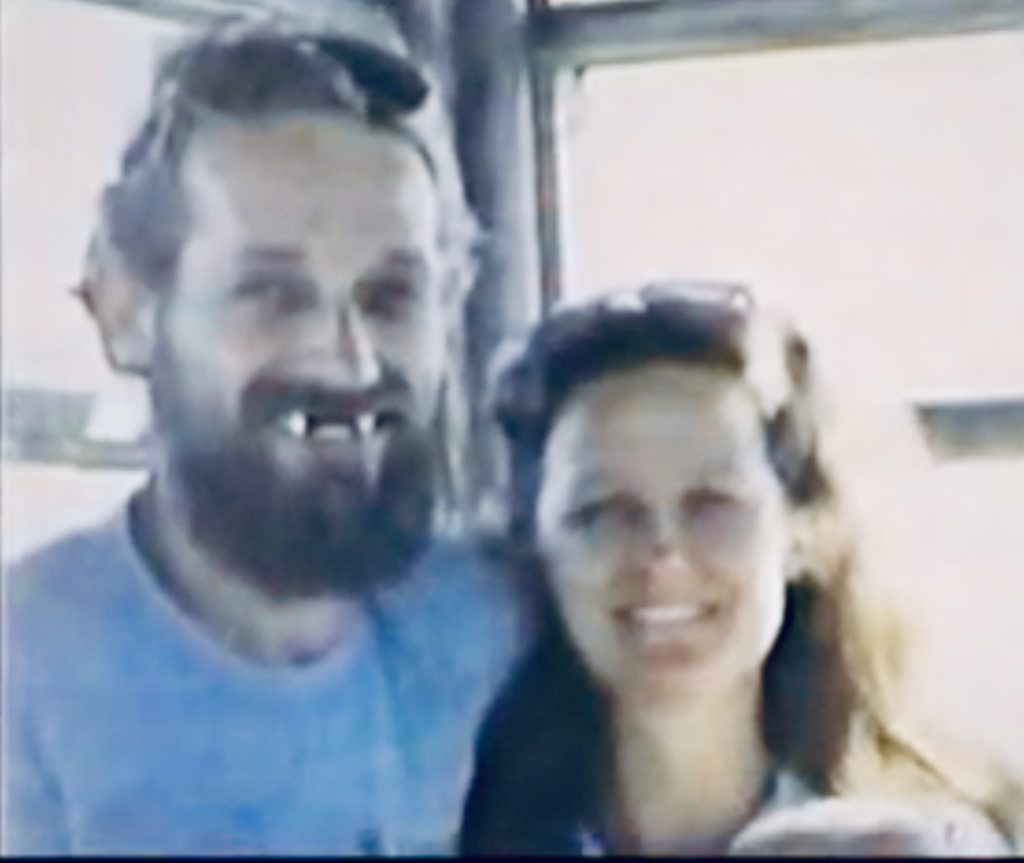
The parents, Kirby and Gloria Kehoe, were anti-government in the extreme – they forbid Chevie from applying for a social security number or a driver’s license so that he would be kept off the grid.
In 1985, the Kehoes moved into a rustic cabin in Deep Lake, near Colville, Washington. They had no electricity or running water, or access to knowledge and information.
In the documentary, people in Colville described Kirby Kehoe as an arrogant, controlling schemer who attempted to convert people in town to a white supremacist view and handed out racist material.
Father Kehoe ordered one child to kill the other
A flavor of their parenting can perhaps best be inferred from a family incident in which Kirby Kehoe once ordered Chevie to kill one of the younger Kehoe children. Chevie refused, sending Kirby Kehoe into a rage. No Kehoe reported their parents to the police over this incident.
Chevie did consider turning his parents in to the police.
In 1989, when he was 16, he left his parent’s cabin and set out on his own. He defied them and went on the grid. He registered for a social security number. He took on odd jobs, including at McDonalds. He paid taxes. During that time, he sought the help of a former school teacher to report his parents to law enforcement. He thought his younger brothers ought to be removed from his parents. Ultimately, he lost the courage to turn them in.
White supremacists
Over time, Chevie adopted the white supremacist views of his parents and began to advance the idea of white separatism. He formed an informal association of like-minded persons who advocated for violence and intolerance to achieve their goals.
In 1994, the Kehoe family moved to the wilderness of the Ozark Mountains in Arkansas.
Mueller family
In the Ozarks, the Kehoe family became friends with William and Nancy Mueller who lived in the area. Like Kirby Kehoe, William Mueller was a vet and an amateur gun dealer with strong anti-government views.
On or around February 12, 1995, while Chevie was visiting his family in the Ozarks, he and Kirby Kehoe went to the Mueller house.
There are different accounts of what happened next.
Guns disappear from the Muellers
Gloria Kehoe says she was told that Chevie and her husband robbed the Mueller house while they were at a gun show, stealing approximately $50,000 in coins and guns, which Chevie took to Washington.
Chevie says that Kirby Kehoe and William Mueller were involved in an insurance scam together that went badly, and they concocted a scheme whereby Kirby Kehoe would take guns and other items from the Mueller home and Mueller would report it as a fake robbery to collect insurance.
The police later asked Gloria Kehoe whether the Mueller robbery was “staged.”
“It crossed my mind,” she said.
Apparently, there was an insurance claim by Mueller which the insurer refused to pay.
After the break-in or insurance scam, Gloria and Kirby Kehoe traveled back and forth by car between Arkansas and Washington.
They sold property in Arkansas and registered the sale under a fake social security number to avoid the payment of taxes and remain off the grid.
Daniel Lewis Lee
Enter Daniel Lewis Lee.
He met Chevie in 1995 in Washington. There is little information about Lee. We know from the trial that, at 17, he pled guilty to taking property from a teenager who later was murdered by someone else. Lee shared in the Kehoe family vision of white separatism and supremacy.
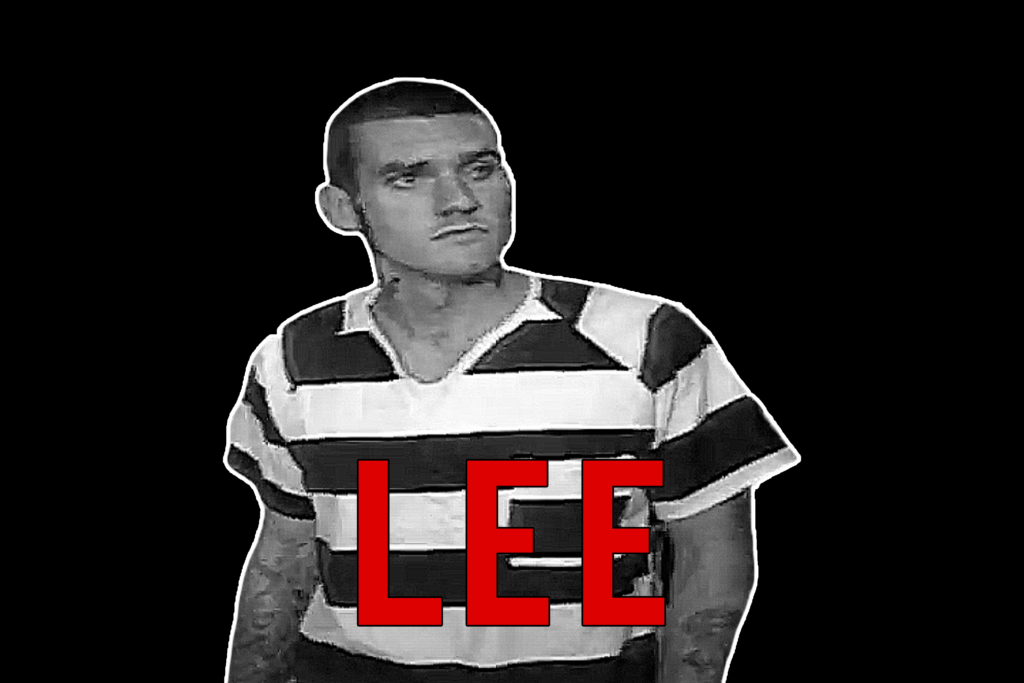
In January 1996, Lee asked Chevie to drive him to Oklahoma so that he could visit his mother who was in hospital recovering from surgery.
The Mueller murders
Here too, there are different accounts of what happened next.
According to Gloria Kehoe and her second oldest son, Cheyne Kehoe, at the end of that trip, on January 11, 1996, Chevie and Lee detoured to the house rented by the Muellers. The Muellers were not home so they broke in but couldn’t find anything of value so they waited for the Muellers to return.
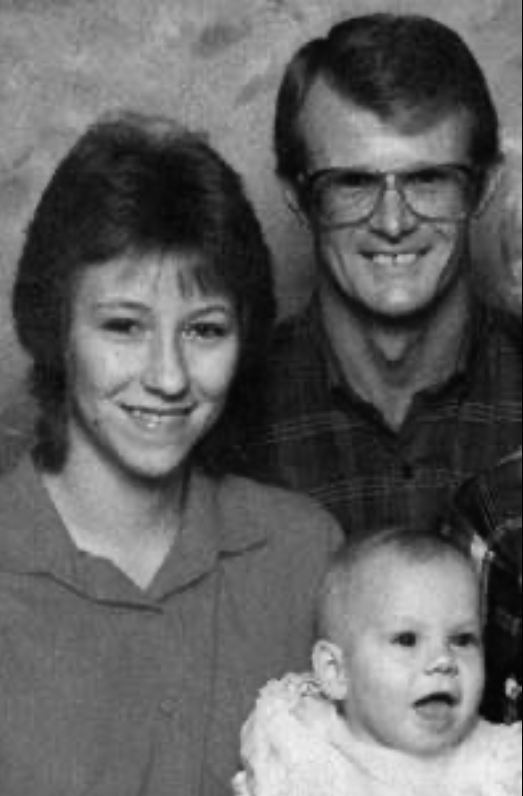
When the Muellers returned home, Lee and Chevie emerged from hiding. They were dressed in police gear. Lee was wearing an FBI cap. They overpowered the family, handcuffed them and demanded that William Mueller hand over his valuables.
After finding cash, guns and ammunition, they placed plastic bags over their heads. They used duct tape to hold the bags in place until they suffocated to death.
Lee refused to kill eight year old Sarah Powell, so Chevie killed her by himself.
The vehicle used for the murders was a 1985 GMC truck owned, at that time, by Kirby Kehoe.
After killing the Muellers, they took their bodies in the 1985 GMC truck to Pope County and threw them, weighted down with rocks, into the Illinois Bayou.
Lee and Chevie drove back to Washington with the proceeds of crime.
Gloria Kehoe told the police that Lee and Chevie confessed the murders to her a month after they had occurred and gave her details of how the murders were carried out.
She would wait two years before telling the police about the murders.
Chevie says that they never went to the Mueller home and that his parents, who had a relationship with the Muellers, were responsible for their murders.
Back in the Ozark Mountains, no one knew what had happed to the Muellers but foul play was not suspected at first.
Seattle gun sales
The Kehoe family began selling guns taken from the Muellers. One of the guns registered to Nancy Mueller was sold by Kirby Kehoe in Seattle, triggering an investigation into him. A second gun belonging to William Mueller was found in the possession of a Seattle man who said that he bought it from Chevie.
Bodies discovered
Then, on June 28, 1996, a woman fishing near a bridge that crosses the Illinois Bayou snagged her fishing line on two tennis shoes tied together. She yanked and reeled in her line and saw there was a leg bone attached. She went to the police. The police drag-netted the water and recovered parts of the bodies of the Muellers.
When two guns belonging to the Muellers sold by the Kehoes surfaced in Washington state, and bodies surfaced in the Ozarks, the Kehoe family, except Chevie, moved to Yaak, Montana.
Police shoot out in Ohio
Several months later, on February 15, 1997, Chevie and Cheyne Kehoe were driving to a campground in Ohio. Chevie was driving his car – an older blue Chevrolet Suburban. They were stopped by state troopers in Wilmington, Ohio. The truck had an expired license plate.
Chevie exited the truck and while he was talking to the troopers, Cheyne Kehoe jumped out of the passenger side of the truck with a loaded gun and started shooting at the troopers. Fortunately, they were not injured. Cheyne Kehoe then fled on foot and Chevie drove off in the truck.
Hours later, Chevie shot at two Wilmington police officers who pulled up behind the truck in a parking lot, and then fled on foot. A passenger was injured in the shoot out.
The dramatic shoot out was aired on several news stations across America. The police seized the Chevrolet Suburban.
The FBI cap
In the Chevrolet Suburban, the police found law enforcement gear, guns, ammunition, handcuffs, duct tape and FBI caps.
Following the police shoot out, Chevie and Cheyne Kehoe became wanted fugitives. Their parents helped them flee.
Kirby Kehoe suggested Chevie pay him money for his truck – the 1985 GMC – to flee, which he did, and he then transferred the vehicle registration to his name. That was the truck used for the Mueller murders.
Ranching in Utah
Chevie and Cheyne Kehoe ended up in Beryl, Utah, where Chevie got a job managing a ranch. While in Utah, Cheyne Kehoe alleged that he became nervous when Chevie discussed murdering their parents.
Cheyne Kehoe stole Chevie’s GMC truck and left Utah. He drove to his parents’ place in Yaak, Montana.
A King Lear family
Chevie says that Cheyne Kehoe went to obtain instructions from the parents and that it was decided by them, in essence, that Chevie and Lee should take the fall for the Mueller murders, which would allow Gloria Kehoe and Cheyne Kehoe’s family to collect an award of approximately $50,000 each for turning them in.
Cheyne Kehoe lied to the police and at first, said that he had not gone to Yaak, Montana, to talk with Kirby and Gloria Kehoe before turning himself in and handing over Chevie. But he had.
End of the road
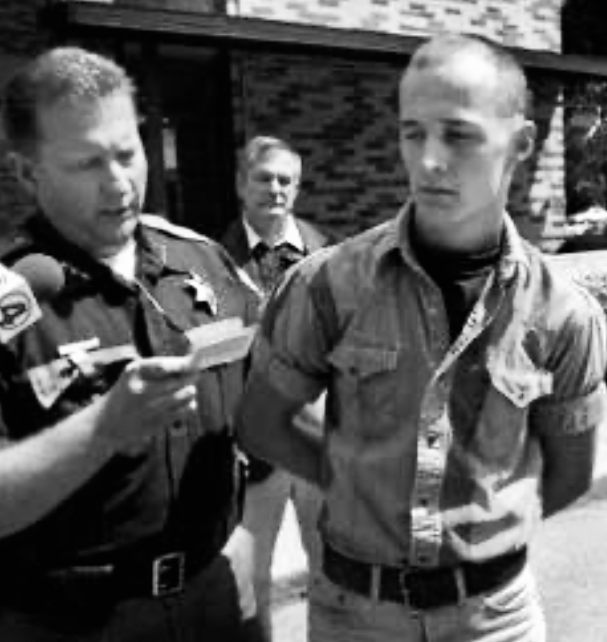
On June 16, 1997, Cheyne Kehoe turned himself in to authorities and told them that, in February 1997, Chevie had confessed to him that he and Lee murdered the Muellers. He provided them with the GMC truck he had stolen from Chevie and then driven to his parents place. He told law enforcement that they would be able to find evidence therein which would tie Chevie to the Mueller murders. The evidence? Duct tape which “had some paint on it,†he said, that would match. The jury must have wondered how Cheyne Kehoe could possibly know that duct tape on the three dead bodies recovered from the Illinois Bayou contained chips of paint.
The next day, the police arrested Chevie.
In September 1997, Lee was arrested in Oklahoma.
In March 1998, Chevie’s mother turned in her son. She went to the police and told them that two years earlier, Chevie and Lee had confessed committing the murders to her.
Gloria Kehoe led police to a storage locker rented by Kirby Kehoe that contained items stolen from the Mueller house. Kirby Kehoe also had 30,000 rounds of ammunition, an AK-47, assault weapons, grenades and large quantities of guns in his storage locker.
She led police to a second storage locker that she said was rented by Chevie which had items similar to those in the Mueller home. Forensic scientists found the fingerprints of Lee and Chevie on some items in Chevie’s storage locker. The fingerprints could have arisen from Lee and Chevie moving items into the storage locker for or from, any of Gloria, Kirby or Cheyne Kehoe.
Gloria Kehoe told the police that Kirby Kehoe was going to kill her because she knew too much. The jury must have wondered about this too – she had stated that her son, and not her husband, was a killer, so why would she be afraid that her non-killer husband may kill her and what did she know that was “too much?”
The indictments
On December 12, 1997, Chevie and Lee were indicted (with others) with several significant offences, superseded in July 1998, with charges that included racketeering and murder. The indictment alleged, among other things, that Chevie launched an enterprise designed to start a revolution in the US to create a new supremacist nation financed with the proceeds of crime derived from robberies, kidnapping and the murder of the Muellers.
Both Lee and Chevie denied involvement in the Mueller murders.
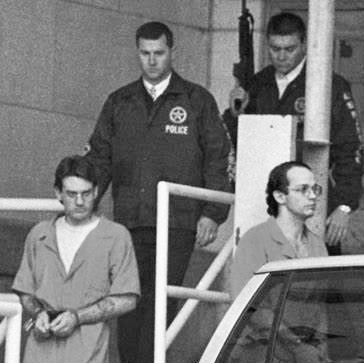
A strand of hair
The case in respect of the murders was mostly circumstantial, based on the testimony of Gloria Kehoe and Cheyne Kehoe.
But there were also two pieces of forensic evidence linked to the Mueller murders.
Experts testified that: there were paint samples taken from the GMC truck (owned by Kirby Kehoe at the time of the murders and later stolen by Cheyne Kehoe and driven to Kehoe parents where it was seized) that were consistent with paint chips found in duct tape removed from the Mueller bodies (linking the GMC truck to the murders); and that one of the FBI caps located in Chevie’s Chevrolet Suburban was used in the Mueller murders and contained a hair that an expert testified was similar to Lee’s (linking Lee to the murders).
The hair strand in the FBI cap was the only physical or direct evidence tying Lee to the Mueller murders.
No DNA testing was done on that strand of hair.
The jury was told at closing that it was Lee’s hair in the FBI cap.
Only it was not.
In 2007, long after the trial was over, the hair was DNA tested and was excluded from being Lee’s hair.
On May 4, 1999, a jury found Lee and Chevie guilty of numerous offenses. Lee was found guilty of three counts of murder, racketeering and conspiracy to commit racketeering.
Lee was sentenced to death.
Chevie was not.
An appeal Court later called the disparity between the two sentenced given to Chevie and Lee “troubling” and “unfair.”
Both appealed their sentences numerous times, all unsuccessfully.
Strand of hair DNA tested
Lee, in particular, as part of a broader set of appeals, appealed with the new evidence that proved from a DNA test that the strand of hair in the FBI cap worn by one of the men who committed the Mueller murders, was not his.
The argument, in effect, was that since it was proven that that particular FBI cap was worn to commit the Mueller murders and the strand of hair was not Lee’s or Chevie’s as the jury was told, there must have either been a third man in the Mueller home who participated in the murders, or there were two men, and Lee was not one of them. Either way, it was presumably argued, based on the DNA evidence, there was no longer physical evidence that tied Lee to the FBI cap, and therefore to the murders.
In 2008, the Court rejected the new evidence from the DNA test as a ground of appeal to vacate his sentence, finding that he was not prejudiced by forensic testimony that the hair in the FBI cap used in the Mueller murders was similar to his or by statements at trial that the hair was his.
Execution of Lee appealed
The execution of Lee was contested by some.
Members of the family of the victims did not support Lee’s execution. Neither did a prosecutor who prosecuted the case against Lee. The presiding judge over the case, now deceased, said that justice was not served in respect of Lee’s sentence. They do not doubt his guilt; their objections were over the inequitable result of Lee’s sentence compared to Chevie’s.
Lee and the victim’s family both filed last minute appeals to the US Supreme Court to stop the execution, which were unsuccessful. The US Supreme Court order to deny the stay of execution of Lee is here. Its written opinion is here.
The dissent is longer than the majority opinion.
Justice Breyer with whom Justice Ginsburg joined in dissent wrote: “Given the finality and seriousness of a death sentence, it is particularly important to ensure that the individuals sentenced to death are guilty, that they received full and fair procedures, and that they do not spend excessively long periods of time on death row. Courts must also ensure that executions take place through means that are not inhumane”, noting that Chevie was not sentenced to death.
Justice Sotomayor also dissented, joined by Justice Ginsburg and Justice Kagan, arguing that the resumption of federal executions was being carried out before any Court could consider whether the new drug protocol was unconstitutionally cruel and unusual.
The majority held, among other things, that any further appeal by Lee was unlikely to succeed on its merits and that questions in respect of carrying out capital punishment are not matters for the Courts to decide; rather, they are questions for the people to decide (e.g., the Scalia view that the tree of law does not grow).
Justice Ginsburg was ill but stayed up until 2 a.m., fighting an infection, to deliberate on the Lee appeals. She was admitted to John Hopkins Hospital a few hours later.
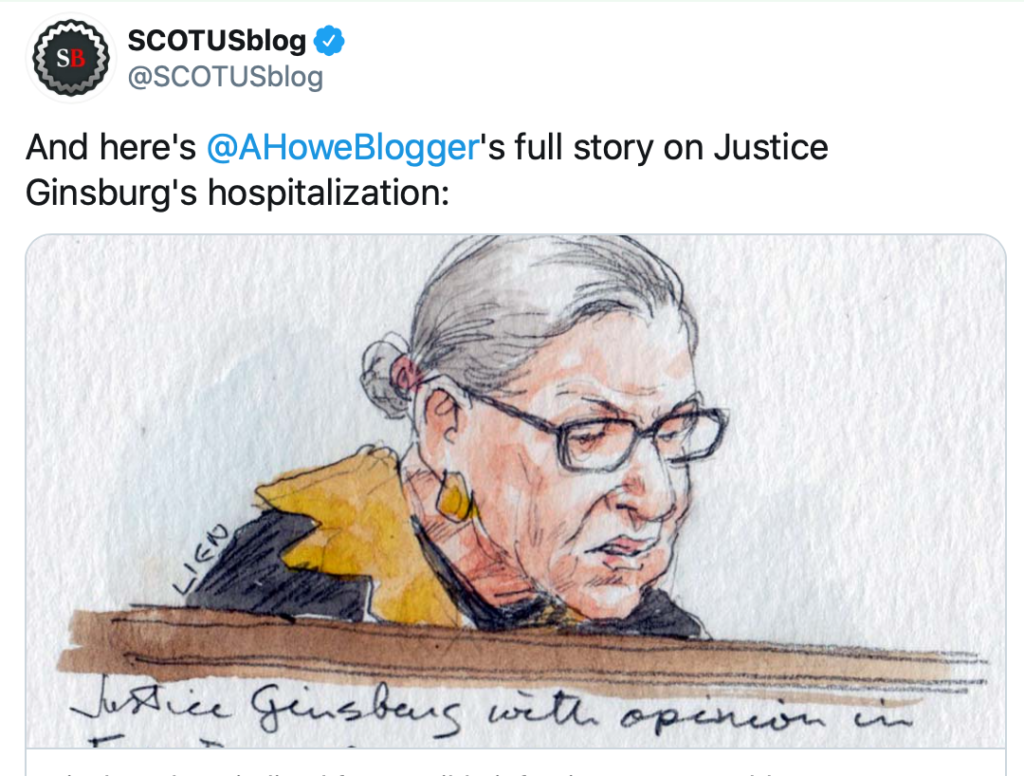
Where are they now?
Chevie is in prison in the Florence, Colorado federal correctional complex serving a life sentence. The Green River Killer is at the same prison.
Gloria Kehoe disappeared after the case and is believed to have returned to Yaak, Montana, where she raised the remaining six Kehoe boys.
Kirby Kehoe and Cheyne Kehoe were both sentenced to terms of incarceration for various convictions related to their activities in the mid-1990s. Both were released and then predictably resumed their lives of serious criminality and illegal weapons collecting together.
Kirby Kehoe is currently incarcerated in California.
Cheyne Kehoe is at an unknown location, possibly released, although an Arizona Court held, as late as August 2019, that he posed a danger to the safety of the community.
In 2013, those two and several other Kehoe sons were living off the grid on 40 acres of land in Ash Fork, Arizona, where over a dozen illegal guns and 15,000 rounds of ammunition were located and confiscated.

These Arizona Kehoes were engaged in the production and commercialization of illegal drugs.
At that time, a Kehoe son told law enforcement that his father, Kirby Kehoe, was unstable, had extreme anti-government views and would act on those views.
Lee was executed on July 14, 2020. While serving his sentence in prison, he renounced his previous white supremacist views. Did he commit the murders he was convicted of? A jury thought so, but he always denied it and Chevie said that Lee had nothing to do with the Mueller murders. It is remotely possible that Justices Breyer and Ginsburg in their dissent that would have stopped Lee’s execution, had a measure of reasonable doubt in their minds when Breyer wrote (in respect of Lee on the eve of his execution): “it is particularly important to ensure that the individuals sentenced to death are guilty.”
An unsolved mystery
We are left with the DNA test of the strand of hair proven not to be Lee’s.
The identity of the person whose strand of hair was taken from the FBI cap that was used in the Mueller murders remains an unsolved mystery.